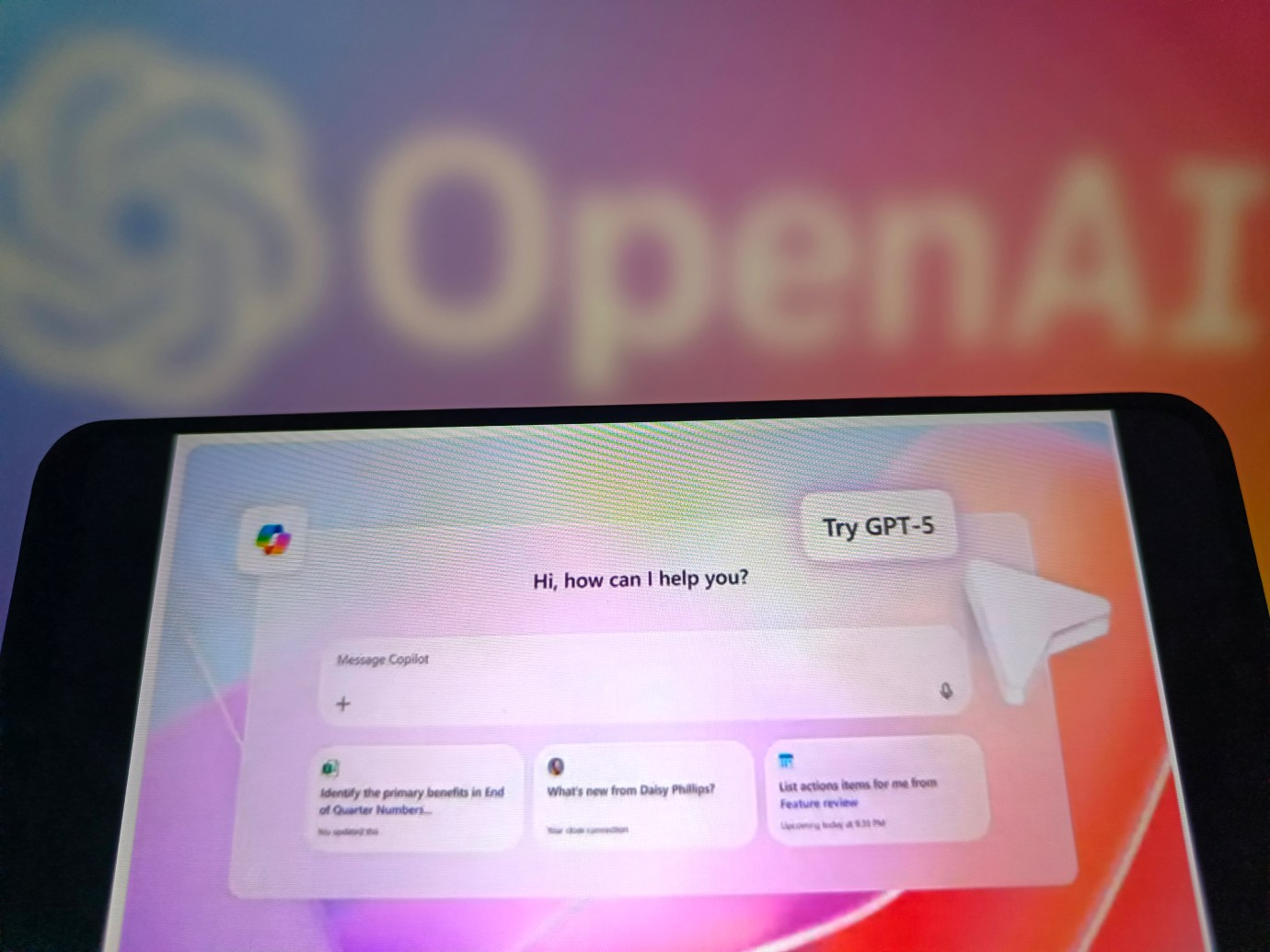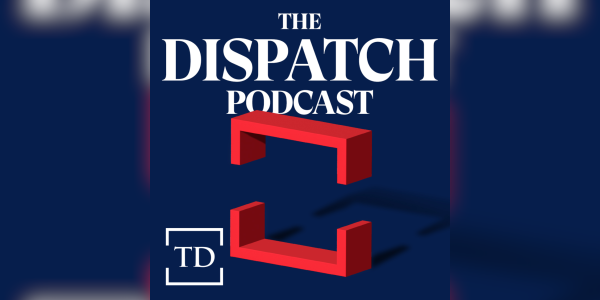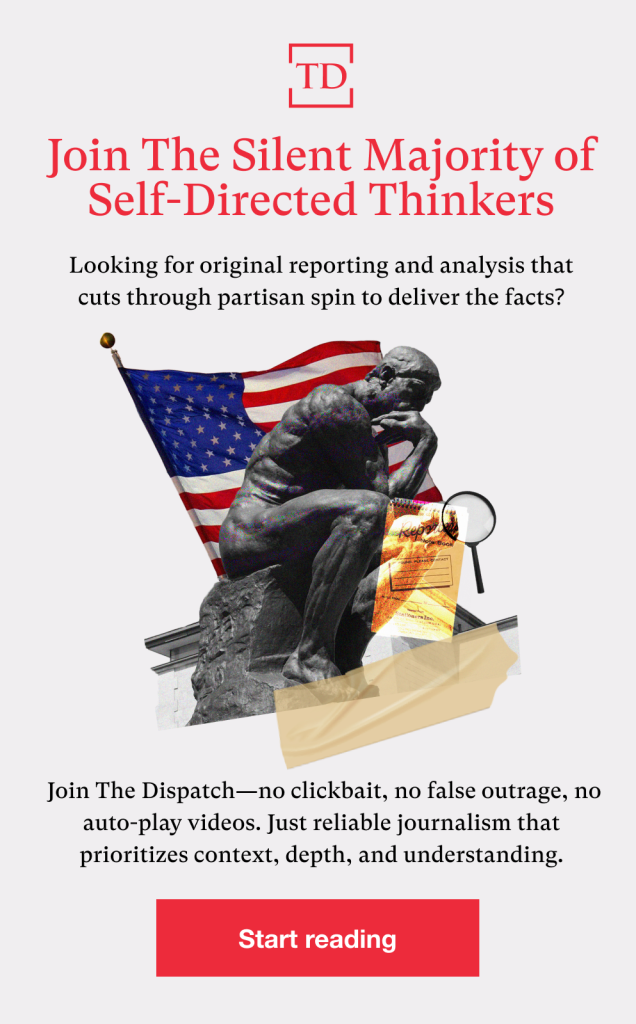Happy Monday! A hearty congratulations to Petunia, the 2-year-old hairless bulldog who took home the prize for World’s Ugliest Dog on Friday. After her rescue from a backyard breeder in Las Vegas, Petunia underwent surgery to correct an elongated palate. We think her crooked smile and infectious charm show that beauty truly is in the eye of the beholder.
Quick Hits: Today’s Top Stories
- President Donald Trump announced plans on Friday to meet with Russian President Vladimir Putin, as the White House’s ultimatum for Moscow to reach a ceasefire deal with Ukraine or face U.S. sanctions expired. The summit, which will mark the first such face-to-face meeting since Putin met with former President Joe Biden in June 2021, will take place in Alaska this upcoming Friday. Ahead of the announcement, Trump indicated that Ukrainian territorial concessions could be part of a forthcoming peace agreement: “It’s very complicated,” he told reporters. “But we’re going to get some [territory] back, and we’re going to get some switched.” It remains unclear whether Ukrainian President Volodymyr Zelensky—who on Saturday said Ukrainians would “not gift their land to the occupier”—will participate in the talks.
- German Chancellor Friedrich Merz on Friday announced a partial arms embargo on Israel, cutting off the exports of weapons that could be used in the Gaza Strip “until further notice.” The decision came after Israel’s Security Cabinet approved plans to launch an offensive to capture Gaza City, a move aimed at eliminating one of Hamas’ final strongholds in the war-torn enclave. “The German government remains deeply concerned about the ongoing suffering of the civilian population in the Gaza Strip,” Merz said in a statement. It’s unclear which weapons shipments will be affected by the embargo, but, according to the Stockholm International Peace Research Institute, Germany was one of Israel’s main international arms suppliers between 2020 and 2024, second only to the United States.
- Australian Prime Minister Anthony Albanese said on Saturday that Australia will join Canada, France, and the United Kingdom in recognizing a Palestinian state, conditional on a set of commitments he claimed Australia had received from the Palestinian Authority: that Hamas would have no involvement in Palestinian government, that Gaza would demilitarize, and that the state would hold elections. “To have European countries and Australia march into that rabbit hole,” Israeli Prime Minister Benjamin Netanyahu responded, “this canard, is disappointing and I think it’s actually shameful.” The Israeli envoy to Australia, Amir Maimon, posted on X that the government’s decision undermines Israel’s security and “elevates the position of Hamas.”
- Anas al-Sharif was one of five Al Jazeera reporters killed in an Israeli airstrike on Sunday, near the Shifa Hospital in eastern Gaza City. Sharif previously was part of a Reuters team that won the 2024 Pulitzer Prize for Breaking News Photography, and Al Jazeera claimed in a statement on X that this was a “blatant and premeditated attack on press freedom.” A spokesperson for the Israel Defense Forces confirmed the strike, but added in a statement that the IDF had specifically targeted Sharif, whom Israel accused of being “the head of a Hamas terrorist cell,” using his press credentials as cover. Last October, Sharif was one of six Al Jazeera journalists the IDF accused of being members of Hamas and Palestinian Islamic Jihad, as supported by intelligence and documents gathered in Gaza. Al Jazeera denied this at the time.
- Trump has ordered the Pentagon to prepare to use military force against Latin American drug cartels designated as global terrorist organizations, multiple news outlets reported on Friday. According to the New York Times, the directive includes the possibility of U.S. operations at sea and abroad, raising legal concerns about the deployment of American troops to crack down on the illegal drug trade. The news followed Secretary of State Marco Rubio’s statement Thursday indicating that the administration can use various “elements of American power, intelligence agencies, the Department of Defense, whatever,” to target the groups. Mexican President Claudia Sheinbaum, however, quickly pushed back on the reports. “We co-operate, we collaborate, but there is not going to be an invasion,” she said Friday. “That is ruled out, absolutely ruled out.”
- On Sunday, Trump posted on Truth Social that he would evict the homeless from Washington D.C., and jail its criminals, with more details forthcoming at a White House news conference on Monday. Though the president has yet to make a final decision, Reuters reported that the administration is considering deploying National Guard troops to the capital—who, unlike those in states, the president directly controls. In response, Washington D.C. Mayor Muriel Bowser said on Sunday that, following a spike in 2023, crime in the capital has been declining, with violent crime reaching a six-year low this year. Crime in the District has been a topic of conversation in recent days, however, after 19-year-old DOGE staffer, Edward Coristine—known by the online alias “Big Balls”—was assaulted in the capital last week. Trump and Elon Musk have both posted about the incident, supporting the federalization of the city.
- A gunman opened fire on the U.S. Centers for Disease Control and Prevention headquarters in Atlanta, Georgia, on Friday afternoon, killing one police officer and injuring another. Law enforcement officials reportedly believe the attack on the government agency was targeted; the suspect, a 30-year-old Georgia man, is said to have believed the COVID-19 vaccine was responsible for his history of depression and other health issues. The shooter—who was armed with five guns—was killed in the firefight, but it remains unclear whether he died by a self-inflicted wound or was shot by authorities.
- Vinay Prasad, the Food and Drug Administration’s vaccine chief, is returning to his position less than two weeks after departing the federal agency, the Department of Health and Human Services announced Saturday. Prasad left the FDA late last month after Trump ally Laura Loomer accused him of being a “progressive leftist saboteur” and espousing “anti-Trump rhetoric.” The reversal reportedly came after FDA Commissioner Marty Makary reached out to the White House to seek Prasad’s reinstatement to the agency. Loomer, meanwhile, described the move as an “egregious personnel decision” by the Trump administration.
The AI Race Accelerates

If you waited until the afternoon to catch up on the news, today’s Morning Dispatch may already be a tad outdated. The world’s largest tech companies are engaged in an artificial intelligence arms race, with trillions of dollars in research and development and the world’s top development talent competing to build the best AI. New releases are constant, with additional thresholds being broken almost weekly.
Last Thursday saw OpenAI unveil its long-awaited GPT-5 model, which the company described as its “smartest, fastest, most useful model yet.” With its 4-series models, OpenAI had broken its chatbot into a series of different versions—the lean and fast 4o, the more in-depth 4.5, the reasoning o3, and so on—but GPT-5 is about simplification and consolidation. Rather than users choosing which way the model should approach their request, GPT-5 now dynamically decides whether a question can be answered quickly, needs more thought, or requires an internet search. While not being overly chatty, it’s the model most capable of automatically setting unspecified sub-tasks to complete your request; there’s less tuning and fiddling to make it work for you. As researcher Ethan Mollick put it in his review, GPT-5 “Just Does Stuff.” One AI reviewer had GPT-5 make a liquid physics simulator, then a functional Photoshop clone, each with just a single message.
OpenAI included some dubious charts in its unveiling of the model—which CEO Sam Altman credited to a last-minute crunch—but claimed GPT-5 was a significant leap from prior versions, providing the quality answers of previous reasoning models but with the speed and efficiency of the company’s low-cost versions.
And yet, OpenAI’s was just one release in a week packed with new AI announcements. On Tuesday, Anthropic released a 4.1 update to its Opus model, which is now even more capable at handling complex tasks and coding. On the same day, Google released arguably the most advanced video generator ever, Genie 3, which can create consistent, navigable three-dimensional spaces. ElevenLabs and Producer.AI released competing music generation models last week—both of which are capable of creating songs that sound pretty darn close to actual music—and FLUX.1 Krea came out, specializing in creating images that resemble actual photographs.
In a vacuum, each of those releases is significant enough to warrant a news story on its own, but the pace of AI development is so rapid that pretty much every announcement is quickly surpassed by another. The same will surely be true this week.
In short, it’s hard to keep up. So, the team at TMD thought it was time for an overview, giving readers a look at the terminology and tools of AI as they stand today—or at least, this morning.
An easy way to think about AI tools is to separate them into specialized “media” systems and general-purpose chatbots.
In media tools, you have image generators, such as Midjourney and Google’s Imagen; AI text-to-video models are led by OpenAI’s Sora and Google’s Veo 3. Suno and Udio are market leaders in AI-generated music, and both companies are currently in discussions with major music labels—including Universal Music Group, Warner Music Group, and Sony—regarding licensing. ElevenLabs, which released that new music generation tool last week, is most notable for its voice AI, which allows users to clone their voice or generate a new one for narration and voice acting.
“General” AI tools are those capable of performing a wide range of functions—notably, research, writing, and coding—and the most familiar versions of these are chatbots. At their core, these are large language models (LLMs): computer programs trained on vast amounts of text, enabling them to recognize patterns in language and generate responses that sound like a human wrote them. You give them a “prompt”—your question or instruction—and the AI produces an output of words that it thinks will answer the prompt.
However, the latest chatbots are now multimodal, meaning they’re capable of understanding and producing information presented in a large variety of forms. You can share a photo with Anthropic’s Claude, have a call with OpenAI’s ChatGPT, or livestream video to Google’s Gemini. They can also search the web, generate images, and write code. At this point, developers can create entire functional apps without writing a single line of code themselves.
Even the classic text function has undergone fundamental changes, with the development of reasoning models—which “think” through their answers first, in lengthy trains of thought—and research modes, which allow the AI to spend time reading hundreds or thousands of sources and synthesizing that information into a lengthy report.
Earlier chatbots weren’t just far less capable but also far less reliable, often making up—or “hallucinating”—information. The ability to “hallucinate” is necessary for LLMs to function—it seems like a byproduct of linguistic creativity—but there are new measures to reduce its frequency, such as “temperature” controls on hallucination and error-checking protocols. With regular use of a model, users can also begin to identify the types of prompts that will provoke the model to hallucinate, and how.
The leading general AIs are OpenAI’s ChatGPT, Anthropic’s Claude, Meta’s Llama, and Google’s Gemini. All have their quirks and advantages, and determining which is the most competent for coding, answering general questions, and solving complex, reasoned responses largely depends on which was most recently updated. However, there are many more chatbots beyond the Big Four. Inflection makes the conversational Pi.AI, France boasts Mistral, and Mr. Musk has his infamous and frequently tagged Grok 4, to say nothing of Chinese alternatives such as Baidu’s Ernie, Alibaba’s Qwen, ByteDance’s Doubao, and DeepSeek R1. These Chinese models are not yet as powerful or capable as the leading Western models, but they’re not far off.
Perhaps the most interesting point is not simply that the tools are changing, but so are their uses. The first publicly accessible version of ChatGPT, released in late 2022, was largely a tool to cheat on university essays, but in just a few short years, its use cases have exploded. Whereas AI companies used to warn that their tools couldn’t provide medical advice, OpenAI’s GPT-5 rollout prominently noted that it was “the best model yet for health-related questions.” AI therapy is growing in popularity, as is chatting to the model as a digital friend. Following last week’s GPT-5 rollout, many emotionally-attached users complained to OpenAI about being barred from their more personable, informal model, 4o. “Losing this direct access would mean an irreversible emotional loss for me,” one user wrote. “It’s mentally devastating.” The sentiment was widely shared, and in response, OpenAI allowed paying users to access older models.
Where does this all go? The goal of every AI company is to build artificial general intelligence (AGI): an ill-defined term that refers to an AI’s ability to perform any task a human could, better than a human would, and therefore replace or dramatically augment human labor. But how far we are from this milestone remains unclear. If we are to believe the widely circulated assessments by former OpenAI developers Daniel Kokotajlo and Leopold Aschenbrenner, AGI will arrive in 2027 as AI tools start to code themselves, leading to exponential, unstoppable self-improvement.
Kokotajlo’s report is a speculative forecast of how that breakthrough could affect politics and Western societies, either producing a spacefaring, robot-powered, science-fiction future or an extinction-level apocalypse. His assessment predicted that, by Q3 2025, companies would start publicly releasing AI agents—AIs that autonomously plan, decide, and act toward goals, using their own tools and scrolling through browser windows, just as a person does—and right on schedule, OpenAI, Anthropic, and Manus have all released agentic models. They’re clunky and unreliable, but as the last years of AI development have taught us, this won’t be true for long.
Skeptics of such reports, and the “doomer” concern about AI acceleration, argue this talk is hype in an AI bubble —that you can’t justify multi-billion-dollar pre-money valuations unless you claim to be building the most important tool ever—and that the current development trajectory doesn’t support the concerned view. On Saturday, David Sacks—the White House’s AI and crypto czar—released a lengthy X post arguing that the models have been improving at a reliable and consistent pace, becoming cheaper and faster, but without a feared intelligence explosion. The Trump administration broadly seems to share its czar’s view, unveiling an “AI Action Plan” in late July, which sought to “remove red tape and onerous regulation” to hasten development and guarantee America’s AI dominance.
But as a reminder, ChatGPT came out less than three years ago. The future is approaching quickly.
Today’s Must-Read

Long Before ‘Podcast Bros,’ the Kids Weren’t Alright
Toeing the Company Line


A Gross Plate of Garbage

Real Virtue Has Roots

No, Jasmine Crockett Didn’t Endorse John Cornyn’s Reelection Bid

Did China Reduce Tariffs on American Exports to 10 Percent?

Backwood Searcher

A Comedy Sequel That Actually Succeeds

From Communism to Conservatism

The Myth of the Cracked Coder


The Right-Wing Revolt Against Supporting Israel | Interview: Curt Mills
Worth Your Time
- Writing for Persuasion, Miles Taylor—a Department of Homeland Security official during Donald Trump’s first stint in the White House who penned an anonymous essay in 2018 about resisting Trump’s worst impulses—warned that the returned president’s campaign of retribution is just getting started. “Before Donald Trump returned to power, many of us who’d worked for him had been sounding the alarm for years,” he wrote. “We warned that Trump 2.0 wouldn’t be about governance. It would be about vengeance. We predicted the dismantling of guardrails, the corrosion of norms, and the ruthless expansion of presidential power against Trump’s enemies. But what’s unfolded in just six months is even more destructive than most envisioned. And it’s been wrapped in Orwellian rhetoric unfamiliar to our democracy, including DOJ ‘strike forces,’ accusations of ‘seditious conspiracy,’ orders on ‘restoring biological truth to the federal government,’ and more.”
Presented Without Comment
CBS News: Trump Says Homeless Should Leave D.C. ‘Immediately’—After Floating Federal Takeover of Capital
Also Presented Without Comment
BBC: Elon Musk’s AI Accused of Making Explicit AI Taylor Swift Videos
In the Zeitgeist
Congratulations to Ryan Timms, the 18-year-old who on Saturday became the second-youngest sprint car driver to win the Knoxville Nationals. “This is awesome. I never thought I’d be standing here for the Knoxville Nationals,” he told reporters after leading the race for all 50 laps. “This is so awesome. I don’t even know what to say. It’s so awesome.”
Let Us Know
How have you incorporated artificial intelligence into your day-to-day life, if at all?









Please note that we at The Dispatch hold ourselves, our work, and our commenters to a higher standard than other places on the internet. We welcome comments that foster genuine debate or discussion—including comments critical of us or our work—but responses that include ad hominem attacks on fellow Dispatch members or are intended to stoke fear and anger may be moderated.
With your membership, you only have the ability to comment on The Morning Dispatch articles. Consider upgrading to join the conversation everywhere.